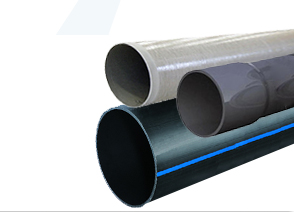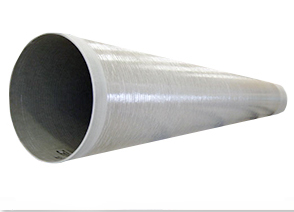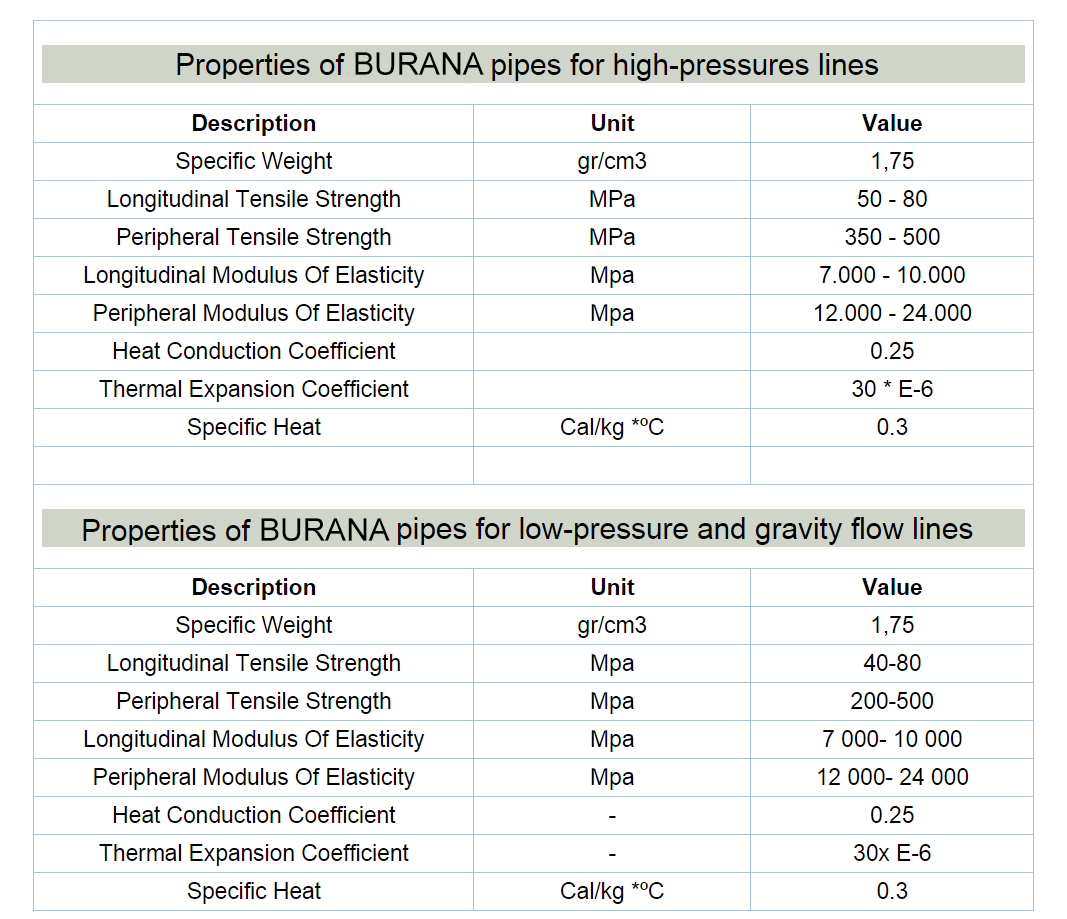Glass fiber reinforced plastic is a composite consisting of at least two different materials. The benefits of each material are united to achieve an overall effect. The selection of proper material as well as material composition depends on the pipe required properties and as well as designed performance characteristics.
GRP pipes were introduced since 1948. Since then GRP invaded the market due to its corrosion resistance capabilities and were selected as alternative to steel and stainless steel pipes.
GRP pipe line expanded to include applications of high pressure, as well as big range of diameters reaching up to 4000 mm.ADVANTAGES OF GRP PIPES
CORROSION RESISTANT: GRP pipes do not require linings, coatings, cathodic protection, wraps or other forms of corrosion protection. Maintenance cost is low.
HYDRAULIC CONDUCTION: Smooth inside wall of GRP pipes provides savings from pipe diameters and from electrical energy consumptions in pumping lines.(Colebrook White k=0,001 Hazen Williams c=155 Manning n=0,008)
QUALITY of FITTINGS: Fittings have the same characteristics of GRP pipes as they are produced from the same materials.
RESISTIVITY: GRP pipes do not conduct electricity and are not affected from induction flows.
ELASTICITY: The elastic characteristic of GRP pipes enables the accommodation to earth movements. For this reason GRP pipes are preferred in seismic zones. Elasticity also reduces the quantities of bends used in the project.
DEVIATION IN FITTINGS: The tolerance of deviation in the fittings decrease the bends required in the projects. The tolerable degrees are 3o for DN300-500 mm, 2o for DN600-900 mm, 1o for DN1000-1800 mm and 0,5o for DN>1800 mm
EXTREMELY SMOOTH BORE: Low friction loss means less pumping energy needed and lower operating costs.
AREAS OF USE
• Drinking water networks and water distribution pipelines
• Irrigation networks and drainage applications
• Sewerage projects network, collector lines
• Sewerage projects force mains
• Pressure Pipelines for hydroelectric power stations
• Storm water drainage
• Cooling water supply and discharge in power stations
• Pipelines to carry the chemical wastes
• Relining Applications
• Pipelines to remove the industrial wastes
• Pipelines to carry the geothermal water
• Reservoir for chemical plants and drinking water
• Discharge lines of the sea










